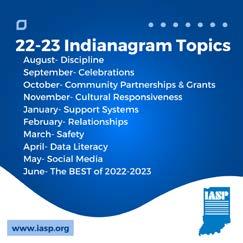Support Systems

BOARD MEMBERS
Tiffany Barrett Keith Burke

Rick Hunt
Nicholas Mitchaner Dan Peo Steve Samuel Kelly Storms
11025 East 25th Street Indianapolis, IN 46229 1-800-285-2188 or 317-891-9900 www.iasp.org tbarrett@iasp.org


Tiffany Barrett Keith Burke

Rick Hunt
Nicholas Mitchaner Dan Peo Steve Samuel Kelly Storms
11025 East 25th Street Indianapolis, IN 46229 1-800-285-2188 or 317-891-9900 www.iasp.org tbarrett@iasp.org
Greetings, Indiana leaders! I trust that the holiday break provided welldeserved rest and relaxation, and that you were able to step away and unplug from school for an extended time. Heading into a new semester, this month’s Indianagram focuses on support systems. We have the first half of the school year in our review view mirror, and that gives us an opportunity to reflect about how we might better support our students second semester or begin casting vision for 2023-24 school year.
If you are like me, I have noticed that my students have greater needs –academic, social-emotional, behavioral - than ever before, and that was only exacerbated by the pandemic. The adverse childhood experiences (ACEs) my students are facing have increased in number and severity, having a direct impact on student success. At the same time, my school is experiencing enrollment growth, presenting more challenges to know students and their families and serve them well. In response to our changing circumstances and as part of our district’s MTSS (multi-tiered systems of supports) efforts, we created a Student Support Team framework four years ago to better serve our students and their families.
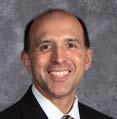
Our Student Support Teams (SSTs) consist of the following personnel: an assistant principal, two counselors, a secretary, and an academic mentor. When needed, school social workers attend to discuss specific students. With our large high school, five teams are organized alphabetically with teams retaining their students throughout high school. Facilitated by an assistant principal, these teams meet weekly to review color-coded data sheets that track grades, attendance, and discipline for students within their team. Functioning much like a PLC, each SST sets norms and follows a structured agenda that includes celebrations, data review, intervention planning, and follow-up communications with students, families, and school staff. In collaboration with my admin team, we set an overall SST goal to target and reduce school failures. To date, the creation of SSTs has been one of the most effective measures to systematically monitor student progress and strategically intervene in support of the whole child.
I am fortunate to have garnered district support and the resources to make our SST structure a reality, and I realize that many schools may have other effective means to support students. But my purpose in sharing is the same for all schools. Systems make a difference. As school leaders, we may not be able to change the environments where our students live or the difficult life experiences they have encountered. Yet, we can control what we can control within our school walls. That includes the allocation of resources and the creation of systems to support our kids and meet them where they are.
The spring semester brings time to review data, research innovative strategies, and review staffing allocations for next school year. When considering these, are there areas of opportunity in your student support system that need bolstered to better serve the whole child? Who could you collaborate with to brainstorm ideas and serve as an accountability partner to make this a priority? If you have multiple teams, are your systems aligned with tight and loose components clearly defined? As a building leader, answering these questions and taking small, actionable steps during the next five months may be keys to unlocking a legacy of hope for your students!
Matt Shockley IASP PresidentWhile we are now in the middle of January, please let IASP wish you a Happy New Year! I’m sure the break from school brought much needed time away from the daily issues, and hopefully a break form a volume of emails, texts, and phone calls. This chance to unplug and connect with family and friends over the holidays is a strong element of a support system we all need. Our family traveled for some time together, and with no real daily schedule, it allowed all of us to just enjoy good food, the Knoxville Zoo, and lots of football on TV. I especially welcomed this vacation knowing that the upcoming General Assembly session will consume my time over the next four months.
As I read the articles in this issue of the Indianagram, I’m struck by the high quality support systems that leaders, and our Indiana DOE have established to assist you and your staff in your work with our students. Avon High School has found a way to break down a very large school environment to help staff identify and know student issues at the onset, and thereby providing the interventions in a proactive manner. Klondike Middle School, a much smaller school, also takes the proactive approach by knowing those incoming students who will likely struggle with the transition from elementary to middle school, and the content found at the new level. And we can look to Dr. Michael Shaffer’s (Ball State University) article as a way to ensure our personal and professional support system is in place, no matter your school level or your particular school position.
We hope that IASP also serves as your support system and that you are connected to us through our AP or Fall Conference, our IASP District Meetings, or our specific programming. We are set to kick off Cohort 10 of our Indiana New Administrators Leadership Institute (INALI), this 2-year program continues to support brand new and younger Principals, APs, and Deans through mentoring and direct content delivery. We’ve also increased programming for Assistant Principals through our LEADing APs virtual cohorts, and we are assisting three school corporations with direct service to their Assistant Principals in our LEAD program. Our informal support systems includes our weekly Schoolhouse News, the Indianagram, and our Leadership and Advocacy Podcasts. All of these are in place to fulfill our purpose of Growing Leaders, and to ensure our mission, All Principals, All Kids, is always guiding our work.
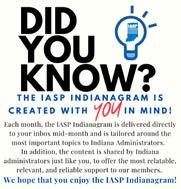
Our purpose of Growing Leaders also brings us the opportunity to support current and future school leaders of color. Through support from the Indiana State University Bayh College of Education, IASP will again bring programming and mentoring to leaders of color, and provide them the opportunity to grow and develop. As stated during the AP and the Fall Conference, our school leaders should represent the students in our classrooms, and we have the great opportunity to do so this spring, and we will continue this work in the coming years. Our mission drives us in our support for All Principals and All Kids, and your leadership demands we fulfill this at each opportunity.
Dr. Todd D. Bess IASP Executive Director
Relationships
February 2023
Safety March 2023
Data Literacy April 2023
Social Media May 2023
Best of 2022-23 June 2023

IASP hosts events throughout the year to support the growth and development of Indiana school administrators and students. Each event is intentionally designed to encourage and engage all participants in the pursuit of learning!
Find A Full List Of Events at www.iasp.org/Events
Special thanks to our Platinum Corporate Sponsor
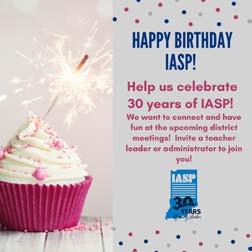
The start of a new semester represents a fresh start…and as we ring in 2023 and celebrate all the excitement that comes with a new year, I just want to say thank you for all that you do for Indiana’s students. Alongside families and communities, as you well know, you are an essential part of our students’ support systems, supporting their academic growth and overall well-being.
As educators, you are also a key part of our IDOE team. You provide feedback and counsel, you have frequent conversations with our teams to soundboard ideas (and vice versa!), and you share your local success stories to be celebrated, and even potentially replicated, statewide. All of this improves our collective work for students! While I can’t possibly quantify all our shared progress throughout 2022, here are just a few of the things that we got done through working together…
■ Launched the first iteration of the Indiana Graduates Prepared to Succeed (Indiana GPS) performance dashboard in December (1.5 years ahead of schedule!). This dashboard begins to re-envision how we strategically measure school and student performance and will be continuously improved in the months and years to come.
■ Established Indiana’s first Office of Kindergarten Readiness to work directly with FSSA to increase access and quality of early learning opportunities, thus ensuring the best possible start for Hoosier students. The Early Learning Advisory Committee (ELAC) was also revised to include a local superintendent, and they have already put out a series of recommendations to inform the state’s ongoing work in this important area.
■ Continued our partnership with the National Center for Assessment to measure academic recovery following the pandemic...informing our ongoing work to best support all students, especially those who are still overcoming the challenges posed by the pandemic, as well as those who were underperforming prior to the pandemic
■ Launched a collaborative effort to prioritize Indiana academic standards in alignment with the key skills and traits necessary for students to be successful after high school graduation. We also approved new K-12 Indiana Academic Standards in science and computer science, as well as academic standards for a new middle school civics course
■ Expanded the state’s literacy (K3) focus and initiatives to help more Hoosier students master the foundational reading skills that make all other learning possible.
- Secured the state’s largest-ever financial investment in literacy – a combined investment from the state and Lilly Endowment of up to $111 million, which is laser focused on helping schools deploy science of reading strategies.
- Provided an opportunity for schools to proactively administer Indiana’s IREAD-3 assessment to second graders. This includes the development of an “on track” indicator at 2nd grade, allowing earlier intervention and support opportunities. Almost 400 elementary schools opted-in!
- Established a statewide goal of having 95 percent of Indiana’s students pass IREAD-3 by 2027.
■ Expanded the state’s STEM focus and initiatives to help prepare more Hoosier students with the STEM knowledge and skills they need to tackle tomorrow’s greatest challenges, both in life and in the workplace.
- Supported educators through instructional coaching in STEM strategies.
- Awarded STEM Acceleration Grant funding to 48 school districts and charter schools to accelerate student learning in STEM subjects.
■ Launched Indiana Learns, a statewide enrichment program to connect eligible students and families with reading and math tutoring.
■ Expanded opportunities for students to engage in work-based learning opportunities and earn high-value credentials while still in high school through the Explore, Engage, Experience grant.
■ Built a framework to better support intentional skill development essential to success in today’s competitive workforce. These skills include collaboration, communication, and work ethic.
■ Expanded access to early college programming through the launch of the state’s Urban College Acceleration Network (UCAN).
■ Offered the Crossing the Finish Line initiative for the second consecutive summer to increase postsecondary completions (educational attainment).
■ Strengthened Indiana’s ability to attract, prepare, and retain quality educators.
- Created a comprehensive teacher supply and demand marketplace that tracks teacher vacancies,

matches teachers with open positions, and helps recruit teachers. The demand-side of the marketplace launched in spring 2022 with additional data on “supply” being available next year.
- Developed the Attract, Prepare, Retain grant to support local initiatives to attract and retain educators in school buildings across the state.
- Launched a first-of-its-kind, statewide partnership with Get Your Teach On, to provide interactive professional development and support to educators and administrators.
- Brought the prestigious, nationally-recognized Milken
Educator Award back to Indiana, with two Hoosier educators receiving this honor in 2022.
- Following the November 2021 launch of the Indiana Special Education Assisted Licensure (I-SEAL) initiative, aimed at strengthening Indiana’s special education teacher pipeline, we have had 630 teachers sign up!
- Developed the Indiana Teachers of English Learners Licensure (I-TELL) initiative with UIndy to attract and train more EL teachers.
- Continued to elevate the education profession through the state’s first-ever Indiana Educational Excellence Awards Gala.

■ Launched the first and second iteration of the statewide COVID-19 relief school spending dashboard (ESSER and GEER) to ensure funding is driving improvements and progress that positively impacts students.
…and truly so much more! I look forward to all that we will accomplish together in 2023, and as always, thank you for all that you do for students!
In my first Assistant Principalship, I focused mainly on attendance and discipline as I served the students and staff in my building. I did have some academic pieces that I worked on, and I am grateful for those experiences; my daily tasks focused much more on the management pieces that many Assistant Principals undertake each day. As Assistant Principals begin to think outside the traditional roles of attendance and discipline and start thinking about moving toward a Principal position, there are many ways to become more involved in student academic interventions. The role of the school counselor is invaluable as they are the first point of contact with parents for many different types of concerns. Our school support staff professionals also have a big role in supporting students as they, too, are on the front lines as students come into the office with questions and challenges. A team approach to supporting students is one that I have found to be very helpful in my new role as one of the Assistant Principals at Avon High School.
This month, I’ve asked my colleague Mrs. Kellie Rodkey, the newly-named Coordinator of the Avon Simon Youth Academy that will be opening in the fall of 2023, to share her experiences with our student support team model and how we utilize that model to support our students.
Having worked as an Assistant Principal for over a decade, I have had the opportunity to work with a variety of support system models in my career. Not one of these systems has had a higher impact on student achievement than our Student Support Team model that we have created and tweaked over the years at Avon High School.
In this model, students in grades 9-12 are divided up alphabetically by last name in groups of about 800. Those groups are then assigned to a Student Support Team (SST) consisting of an Assistant Principal, a Dean of Students, 2 Guidance Counselors (each having a part of that alpha breakdown), an Academic Mentor, and a Student Support Team Secretary. The SST meets weekly to discuss student data and determine interventions for students who are not finding success either academically, social-emotionally, or with attendance.
A typical meeting is very structured and allows everyone on the team to have a voice. A typical agenda includes norms, celebrations, student grade data report, discipline report, attendance report, intervention discussion, and next steps. Discussing the student as a whole helps the team to identify potential causes of problems students are having and allows the team to assign appropriate interventions.
Some of the interventions we use are weekly check-ins with students, parent meetings, assigning an academic mentor, assigning a student to an academic coaching period, or allowing students to attend our alternative setting. Our interventions have grown over the years. The addition of the Academic Mentors and Academic Coaches has been highly successful with struggling students. Academic Mentors pull students from Study Hall, SRT, or class periods and work with them individually on their work and act as a liaison between the student, teachers, and parents. Academic Coaches have students in a class period for credit and teach study skills as well as work with students on goal setting, time management, and work completion. They, too, have that liaison role between students, teachers, and parents.
Prior to using the SST system, as an Assistant Principal, I had very little knowledge of student grades. I worked mainly with students in a discipline and attendance role. With this system, I see the connections between discipline, attendance, grades, and social emotional issues and am able to identify the root cause of issues with the team and provide interventions early so that students find success more quickly. In a large school setting, it helps me to get to know students and their families on a deeper level and to provide more support for them.
Coming from a background of teaching English and Spanish, I have never enjoyed looking at data, but this system has changed that as well. I get excited to hear our data report each week to see how many students have moved from the red category of 3 or more failing grades to the green category of 0 failing grades. Each semester we typically start with around 600 F’s earned and by the end of the semester using our interventions are able to move the needle to fewer than 150 F’s earned.
While our SST system is certainly not perfect and we continue to improve it each year, it has dramatically changed the way we are able to support our students and families in a whole child approach and provide meaningful interventions to lead to academic success.
Mrs. Rodkey can be reached at KRRodkey@avon-schools.org
Jeremy Coleman, principal of Indianapolis’ Brookview Elementary, says Ball State University’s online master of arts in education (MAE) in educational administration and supervision gave him the push he needed: “The MAE was rigorous. It was challenging. It was the jolt I needed to see leadership clearly.”

■ Internships are fulfilled within your own school district.
■ With a master’s degree, you just need the 24-credit license to become a principal.
■ No GRE needed for admission—you can apply quickly and start on your degree.
■ Receive an application fee waiver after the webinar, just for registering.
“This master’s program taught me to think like an administrator.”
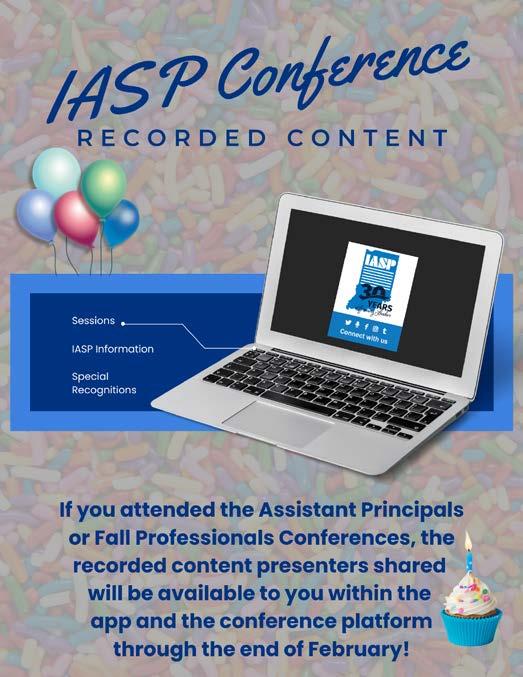
Klondike Middle School (KMS) rests in West Lafayette, IN and is a feeder school of William Henry Harrison High School. KMS welcomes about 160 new 6th grade students annually from all walks of life. Students from all rungs of the affluence ladder attend KMS and the school proudly boasts an international population due to its proximity to Purdue University.
Rich Brown has been the Student Support Specialist for a year at KMS, and upon his arrival, began to recognize additional areas academic support could better benefit students. Rhetoric within the building suggested the students that struggled in 6th grade had the same struggles in 7th and 8th. Using a structure from the high school as a model, KMS built an academic support program called the Nugget Academy targeting 6th grade students based on a qualifying profile.
KMS partnered with neighboring Klondike Elementary School 5th grade teachers to identify 10% of the population that would enter KMS in the fall. The profile of students needing to be identified included students with learning gaps, poorer listening skills, struggles with focus, struggles with confidence, poorer organizational skills, wanted to be successful and more. KMS wanted these students identified on the
first school day instead of figuring out these students by the end of the first grading period. The school also wanted a place for these students as part of an answer to supporting them.
The 16 students identified are currently placed into a cohort with a collective home room. The school’s interventionist and 3 paras staff this home room creating a ratio of 1 adult for every 4 students. The students are fed a weekly diet of organizational skill development and reviews of assignments and due dates. Additionally, the school counselor provides stress relief strategies on Mondays. To ensure the Nugget Academy continues to move students forward, Mr. Brown meets with the 6th grade staff weekly and with the interventionist bi-weekly. Data reviews and anecdotal notes are discussed with the intention of identifying successful students that could rotate out each quarter and struggling students that could rotate into the academy each quarter. To date, 4 students have rotated out and are monitored for continued success.
The school’s hope is to start the students on a more positive footing in middle school, while pushing more students with readiness skills towards their high school years.

While the Nugget Academy targets 6th grade students, there are other adjustments building-wide moving the needle academically. The building administrators are specifically targeting students for weekly, individual meetings to review grades for example. These targeted students are taking the administrators’ challenges seriously and making efforts for improvement. Tardy contracts were implemented in January 2022 for students accumulating 5 or more tardies in a quarter. The number of overall tardies in the building was reduced by 40% from first semester 2021-22 to second semester of the same school year. First semester 2022-23 is tracking at a similar rate to second semester 2021-22. KMS is encouraged to have more students entering classes on time for increased instruction and decreased disruption. A final component to the school’s plan is celebrating success. Students are provided the incentive of attending celebrations the final week of each quarter should they qualify both academically and behaviorally.
Klondike Middle School recognizes the strategies implemented will show less immediate rewards in favor of longterm gains for the individual students. We are preparing them with life-long patterns to build the citizenry of the next generation.
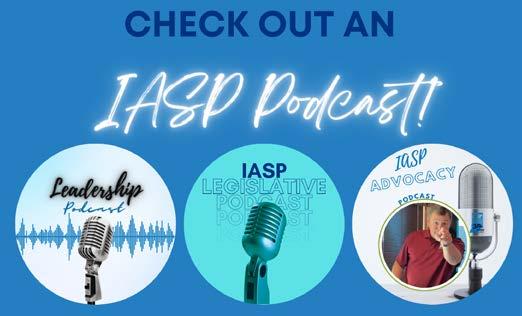



March 14, 2023 9am – 10:30 EST
This workshop will provide Extra Curricular Account (ECA) Treasurers occupation procedural information.
When you register you will receive a few items to help you prepare for the 90-minute workshop. Included, you will receive a link to a training video as well as a link to submit questions and topics you would like to cover at the workshop.
Register online at www.iasp.org (under Principal Programs) Questions, email Beth Moore Kissel at emoore@iasp.org
Method of Payment - $50 per person Check (payable to IASP), P.O., or Credit Card

As we return to school and continue leading through this unique moment in time, our ability to demonstrate hope in our own lives and build such capacity in others will be a key difference in the amount of positive influence we can generate. Research is clear that hope is not some starry-eyed distraction but rather an asset that can be both measured and used as one of the best predictors of future wellbeing. It turns out that hope, at its essence, is a way of thinking, which means that hope is something that can be taught and grown. Therefore, in a time when so many continue to struggle, has the cultivation of hope ever been more important?
A prominent thought leader in what we now know about the science and power of hope comes from the ongoing scholarship of Dr. Chan Hellman of the University of Oklahoma, who defines hope as the belief that:
1) Your future will be better than today and
2) You have the power to make it so.
Three components are needed to grow hope: goals, pathways, and agency.
■ Goals are the cornerstone of hope.
■ Pathways refer to the ability to identify routes toward goals and to find new pathways (i.e., problem solve) around obstacles if necessary.
■ Agency (i.e., willpower) is the ability to sustain motivation to move along these pathways.
But choose your words carefully because in today’s world, we often confuse wishing with hoping, which clouds our thinking and ability to act. For example, we might say something like “I hope that you are doing well.” Something like this is actually a wish in that, although we desire for an outcome, we have no real pathway to achieve that for the other so we are likely passive in it. In contrast, hope is about taking action in pursuit of a preferred future. Specifically, hope is about people having both pathways and agency in pursuit of desirable goals.
Among several key findings from Hellman’s research are the following:
■ Imagination is the instrument of hope in that we must visualize ourselves into that future context as described by
a goal. So how can you help more students/staff envision themselves thriving in a preferred future?
■ If hope is to be developed, there must be meaningful goals – meaningful from the perspective of the given person (as it’s their goal for themselves, not our goal for them) that matters. Importantly, the more one desires a goal, the more the person is going to take on adversity to overcome it. That’s why goals are the cornerstone for building hope.
■ Hope begets hope. Specifically, one opportunity for successful action shows one that the future is possible so that the next positive step is more likely. This is the pathway of successive actions that help shift “I can’t” to “I can.” So how do we help others experience early success toward a preferred goal so that more hope and wellbeing can be cultivated?
■ Finally, the research shows that hope is a social gift – not something that happens in isolation within us but rather something that arises through interpersonal relationships. In short, our connectedness with each other and with something greater than ourselves is one of the greatest predictors of hope and, thus, future wellbeing. So as the new school year arrives, consider how you can model hope and build it in others through increased intentionality about social connectedness.
In summary, at the center of change is our ability to understand the way things are right now in our lives and that we can begin to imagine the ways things could be. This is where hope is born. So as we get 2022-23 underway, let us be agents of hope for those in our circle and be heartened in our leadership by none other than the giant of classic childhood literature, Winnie the Pooh: “You’re braver than you believe, stronger than you seem, and smarter than you think.” Indeed! Never doubt, school leaders, that you were made for just such a time and place as this – and you are never alone! Thank you for your ongoing service. We are so very grateful. Now go take on the year….
Reference Gwinn, C. & Chan, C. (2022). Hope rising: How the science of hope can change your life. New York: Morgan James Publishing.

Support Systems are important in education. Systems help with the efficiency and effectiveness of managing schools. In my school, the concept of TEAM (Together Everyone Achieves More) is utilized to build support systems in order to meet the needs of our school. Staff work collaboratively on grade level teams and school-wide committees to provide a range of support in the areas of curriculum, instruction, assessment, building procedures, and community events. Teams meet a minimum of once a month. A variety of topics are included to meet the needs of our school academically, socially, and behaviorally. Below, is a brief summary of the work assigned within team committees:
■ Leadership Team: A grade level team member and resource representatives serve on this team with administration. The purpose is to assist with school-wide decision making, implementation, and communication. Leadership Team members also support new teachers by serving as a mentor and assisting with New Teacher Academy.
■ Grade Level Teams: Grade levels meet with their teams, the instructional coach, and administration during monthly and weekly grade level collaboration. Curriculum, instruction, and assessments are the primary areas of focus.
■ Social Committee: This team is responsible for assisting in the creation of activities and big events for staff, care and hospitality service, monthly morale boosters, and staff appreciation. For students, the team oversees student council and recycling for students.
■ Schoolwide Building Procedures: Positive behavior incentives include; Level 1 Classroom Management Plans, Student of the Week, Tiger Coins, and a visit to the Tiger Den (Gameroom). School-wide safety procedures and data are reviewed and revised. Also, SEL (Social Emotional Learning) Community Circles and Restorative Chats are implemented. Academic Math & Spell Bowls are also supported.
■ Family and Community Events: It is important to plan regular family events in and out of the building. We enjoy Holiday Food Drives, Family Skate Parties, Field Trips, Straight A’s Recognition, Summer Ice Cream Social, Fall Trick or Treat Drive-Thru, Winter Holiday Extravaganza, and Spring Family Fling. We enjoy the partnership with our PTO Team!
■ District Level Committees: I make sure our school is represented on district level teams. Some teams included are: Equity and Inclusion, SIOP (Sheltered Instruction Observation Protocol), Mental Health & Wellness, SEL Coalition, Inside Wayne, Wayne Photos, Teachers’ Treasurers, Curricular Teams, and Community Fundraising

(Giving Tuesday, Relay for Life, United Way, YCampaign).
Every year, we carry on business as usual by reviewing, revising, and refreshing our team efforts for the new school year. But the last couple of years were not business as usual. Support Systems looked differently during the Pandemic. We had to figure out another way to connect and support each other. As a leader, I had to make sure that I focused on my wellness, while being emotionally supportive for my staff. But, that left me emotionally drained at the end of the day. I was challenged with how to be well for myself and how to be supportive for all stakeholders (staff, students, families, and the community). During unprecedented times, there was not much that I controlled. So I focused on one thing that I was able to manage, with the intentionality of building a support system for adults first. I needed adults to be as well as they could to give their best to children. I observed teachers go through a range of emotions, sickness, fear, doubt, uncertainty, anxiety, depression, and stress. However, the function of schooling did not stop. We did whatever it took to make it work!
Wellness Wednesdays were implemented out of a space of me trying to navigate many emotions and the hope to get “back to normal” in school. Every Wednesday, we gave ourselves permission to focus on self-care with and without students present in the building. I simply started with including positive affirmations in the daily memo. Along with our calendar, teachers were given a positive message to start the day. My secretary and assistant principal assisted with finding weekly positive messages. We were fueling our minds with positive energy. I provided treats in the lounge, mailboxes, and sometimes at the entryway of the building. I included healthy snacks, drinks, and food samples. Vitamin CH (chocolate) was definitely included in our healthy snacks.
Movement was a big part of beginning Wellness Wednesday. As a staff, we took walks together. When students were not in the building, I scheduled a morning and afternoon walk. It was a great time for us to take off our masks and walk around our school community. Then we continued to walk inside the building during breaks and prep periods. Some teams participated in healthy competitions as they logged their steps. We included Yoga sessions from Youtube videos, and a couple of times we were led by a Yoga instructor. During virtual and in-person staff meetings, I began with a pausing moment to take 5 mindful breaths. Taking time to pause and focus on mindful breathing was not
an easy task. I continued to practice and model it for my staff. Our district Mental Health & Wellness coaches also provided strategies for pausing and resting.
The Rhoades’ Relaxation Station was created with the assistance of our SEL Coach. The station is furnished with dim lighting, waterfalls, positive affirmations, soft music, essential oils, water, mints, pillows, a yoga mat, rocking chair, and massage chair. Ahhh, typing this description makes me want to take a break in the Relaxation Station. We all just needed something different. Speaking of different things, I hit it big with staff when I had a massage therapist come in during our two nights of Parent/Teacher Conferences. Teachers did have to pay $1/minute for their services. It was money well spent.

On Wednesdays, staff members were allowed to wear relaxed movement gear such as yoga pants, sweatsuits, and tennis shoes. Including special gear, in the middle of the week, was like winning the lottery. I often joke that I received Indiana Principal of the Year for implementing Wellness Wednesdays the last two years. During year one, my focus was supporting the

well-being of all adults in the building. Of course, I wanted staff to include wellness activities for students as I did for them. So we started creating a bank of Wellness Wednesday resources for students.
For year two, the SEL Coach and I developed Wellness Wednesday 2.0. The focus was on students. Wellness Wednesday for students went beyond a bank of resources and activities on Wednesdays to a school-wide monthly scheduled event. Students have participated in Yoga, line dancing, planting seeds, creating affirmation mirrors and rocks, writing compassion letters, and making community Flip videos. Do you remember DEAR? We dropped everything and read. Well I wanted to “SEAS” (Stop Everything And Self-Care) for students. And this year we did it! Teachers do not have to prepare or purchase any materials for students. We utilize funds raised during our Giving Tuesday campaign. The SEL Coach prepares and delivers all materials needed for our monthly Wellness Wednesdays 2.0.
Wellness Wednesdays created something new, positive, and supportive for our school’s culture. How can you create a system to support the mental health and wellness of your school community? I simply added Wellness Wednesday. As a leader, it is important to support and to #BeWell in all areas of your life.
The 2022 Indiana Department of Education (2022a) report, Indiana’s Priorities for STEM Education, highlights guiding principles regarding STEM education throughout the state:
■ Problem solving is an essential skill for lifelong success;
■ Access to integrated STEM education, regardless of student background or demographics, is critical for creating future opportunities for empowered learners;
■ Communication and collaboration are fundamental skills for engagement in an innovation-driven society;
■ STEM ignites the ability for individuals to learn and selfadvocate; and

■ In order to provide and sustain a well-rounded STEM education, strong and cooperative community partnerships are crucial. (pp. 6-7)
In support of these guiding principles, this month, we explore supports and resources specifically designed for educational leaders in decision-making for high-quality STEM/STEAM programming.
■ Education Reimagined: Leading Systemwide Change with ISTE Standards (Crompton, 2018) The ISTE standards “target knowledge and behaviors required for leaders to empower teachers and make student learning possible” (para 1, n.d.). This e-book guides educational leaders to integrate technology in teaching and learning into classrooms, schools, and districts.
■ Leadership in Integrative STEM: Strategies for Facilitating an Experiential and Student-Centered Culture (Geesa, Rose, & Stith, 2021) Granted, we are a bit biased here as we are book editors/authors, but this book provides extensive resources and evidence-based practices for educational leaders in nine domains of integrative STEM: (1) mission and culture; (2) equity, diversity, and inclusion; (3) infrastructure and programming; (4) curriculum; (5) instruction; (6) extended learning; (7) professional learning; (8) assessment; and (9) evaluation.
■ STEM Leadership: How do I create a STEM Culture in my School? (Buckner & Boyd, 2015) Published through the Association for Supervision and Curriculum Development
(ASCD), this book is an easily-digestible introduction to STEM culture in schools. While the book provides a number of strategies, it is only 52 pages long; therefore, it is a good text for leaders who need a very quick read of the critical elements needed for a STEM culture.
■ The STEM Shift (Myers & Berkowicz, 2015) In this book, the authors begin with answering the “why” of positioning a school or district to implement a strong STEM/STEAM program. The book then navigates through preparing the stakeholders within the school ecosystem toward a shared vision of an integrated STEM program. With engaging graphics, research, and strategies, this book is a great book study candidate for educational leaders and teacher leaders.
■ Indiana Department of Education: STEM Education (Indiana Department of Education, 2022b) The Indiana’s Priorities for STEM Education (Indiana Department of Education, 2022a) explains the framework of a statewide STEM coaching program. “Indiana will train and embed STEM instructional coaches into school corporations based on criteria identifying student populations of greatest need. Implementation of the coaching model will begin in Fall 2022, with ongoing research efforts aimed at ensuring the sustainability of this model long term” (p. 3).
■ Indiana STEM Education Conference (Purdue University, 2022) This statewide conference is designed for educators, educational leaders, and STEM education-focused vendors. Each year, the conference provides participants with opportunities to attend presentations and engage in professional learning related to STEM research, professional careers, curriculum, and instruction. Specific topics (e.g., design thinking, and mapping STEM pathways) are addressed as well.
■ Infinite Capacity LLC (2022) An Indianapolis-based educational consulting firm that provides tailored support for school and district leaders to build robust STEM/ STEAM programming. For example, the firm can help school leaders navigate the IDOE STEM Certification process. Additional services, such as school/district-level STEM audits, program evaluations, grant writing, speaking engagements, and research, are offered.
■ I-STEM Resource Network (2022) The mission of the I-STEM Resource Network is three-fold: 1) support STEM
education through projects like the Indiana Science Initiative, 2) support STEM teachers through professional development, and 3) advocate for statewide STEM education opportunities and policies that support higher STEM academic performance.
■ STEM Synergy (formerly the Indiana STEM Ecosystem) (Central Indiana Educational Service Center [CIESC], Keep Indiana Learning, n.d.) STEM Synergy is a “STEMcentric community of practice committed to fostering the delivery of data-informed services, including high-quality professional development, resources, and support for STEM-focused districts, programs, and organizations in an endeavor to produce a combined impact greater than the sum of separate STEM efforts” (para. 1). Educational leaders and teachers may find a diverse assortment of free resources to build STEM literacy.
■ YOU Belong in STEM (U.S. Department of Education, n.d.) YOU Belong in STEM is a nationwide initiative to implement PK-16 education in STEM. Lists of educational entities committed to supporting the initiative with established missions of equity and belonging, measurable impacts, outcome-orientedness, force multipliers, and transparency are shared.
Educational leaders are critical in supporting the Indiana Department of Education’s guiding principles in STEM education and providing a high-quality STEM culture in schools and districts. Therefore, the development of strong STEM/STEAM leadership for decision-making is a priority. In this month’s Indianagram, we have shared several resources that can support educational leaders on this journey of building STEM capacity. Have resources you would like us to share in the future? Feel free to reach out to us at Contact@ infinitecapacity.com!
Buchner, T., & Boyd, B. (2015). STEM Leadership: How do I create a STEM Culture in my School?. ASCD. https://www.ascd.org/books/stemleadership?variant=sf114081
Central Indiana Educational Service Center (CIESC), Keep Indiana Learning. (n.d.). STEM synergy. https://keepindianalearning.org/expert-networks/ stem-synergy/ Crompton, H. (2018). Education reimagined: Leading systemwide change with ISTE standards. ISTE. https://my.iste.org/s/store?_ ga=2.260457869.108887951.1672062423-313210609.1671454600#/store/brow se/detail/a1w1U000004Lp6vQAC
Geesa, R. L., Rose, M. A., & Stith, K. M. (2021). Leadership in integrative STEM education: Collaborative strategies for facilitating an experiential and student-centered culture. Rowman & Littlefield. https://rowman. com/ISBN/9781475857351/Leadership-in-Integrative-STEM-EducationCollaborative-Stra tegies-for-Facilitating-an-Experiential-and-StudentCentered-Culture
Indiana Department of Education (IDOE). (2022a). Indiana’s priorities for STEM education https://media.doe.in.gov/news/indianas-priorities-forstem-education-final.pdf?utm_content=&utm_mediu m=email&utm_ name=&utm_source=govdelivery&utm_term=
Indiana Department of Education (IDOE). (2022b). STEM education https://www.in.gov/doe/students/stem-education/
Infinite Capacity LLC. (2022). Infinite capacity https://www.infinitecapacity. com/
International Society for Technology in Education (ISTE). (n.d.). ISTE standards for educational leaders https://www.iste.org/standards/istestandards-for-education-leaders
I-STEM Resource Network. (2022). I-STEM resource network https://www. istemnetwork.org/
Myers, A. P., & Berkowicz, J. (2015). The STEM shift: A guide for school leaders (1st ed.). Corwin. https://us.corwin.com/en-us/nam/the-stem-shift/ book243402
Purdue University. (2022). 2023 Indiana STEM education conference. https://www.education.purdue.edu/events/2023-indiana-stem-educationconference/
U.S. Department of Education. (n.d.). YOU belong in STEM https://www. ed.gov/stem?
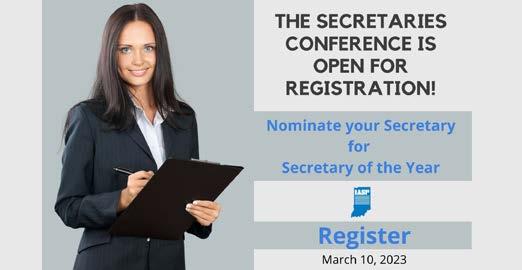
If there’s somethin’ strange in the neighborhood Who ya gonna call? GHOSTBUSTERS! If you’re seein’ things runnin’ thru your head Who can you call? GHOSTBUSTERS
Roaring into town in a 1959 white Cadillac ambulance (only painted white because black didn’t show up well in filming the night scenes of the movie!), Ivan Reitman’s great 1984 movie written by Dan Akroyd and Harold Ramis, and starring so many notables we don’t have time to mention them all, perhaps the most notable thing about it all was... you got it, THE SONG!
I suppose it is arguable that 1984 was a simpler year. The summer of Ghostbuster’s release was a much simpler one for me, as I had just finished the first year of my Master’s work and had accepted my first teaching position for the fall. I was to start teaching in a mission school in Appalachia, a split self-contained sixth and seventh grade class, and I was ready to take on the world. Now, almost thirty-nine years later, I can look back and see that throughout my career there have been people who have been instrumental at various stages of that career that I could never have made it without them. I would not call them “ghostbusters” per se but I would call them essential supports or even as Dorie Clark, author of Stand Out and numerous other books, names them her mentoring “board of directors.”
Dorie says that we have a tendency to look for a “unicorn mentor”, that person who can fill all the gaps and be that one person we can always call upon in an emergency, who will always pick up the phone, always know instinctively the best advice to give, always flawlessly give us the key thing we need at that most desperate moment that will keep our head in the game just when we thought we had no other choice but to give up and melt like the witch in the Wizard of Oz after being hit with that one brutal bucket of water. Sadly, there are very few of those unicorn mentors around!
That fact is one of the best reasons those of us who are old-timers used to keep that wonderful antiquated piece of office equipment that many new principals would not even recognize today. The Rolodex. For those of you who have always lived in the world of cellphones, a Rolodex was a strange card contraption with slotted index cards
on which you could handwrite, type, or even word-process your contacts and then file alphabetically all of those people you really wanted to remember. If you were really lucky, you had a very full Rolodex (lots of people you could call in an emergency situation!) and sometimes a parting principal would be so kind as to leave their old Rolodex behind – gifting you with all of their old contacts (what a grand gift for the new person!).
But the concept is the same: who makes up your personal Board of Directors? Who are those people that you trust with your career so very thoroughly that when you come to a crossroads, you can pick up the phone and call them and say, “Hey, I need a half hour. Can we talk?”
Your board should be pretty diverse, and they should not all agree with you. Obviously your spouse or significant other should play a big role on your board, after all, when all is said and done, they will be with you when the last retirement card is opened, and the last hurrah has been hurrahed (is that even a word?) Beyond that, if you are a person of faith, find someone who shares or challenges your belief system. Because you are an educator, find someone who has walked the path ahead of you, whose wisdom you trust. You don’t necessarily have to enter into a formal agreement with them, but you may want to try them out on a question here and there and see how willing they are to share thoughts with you. You may be surprised how willing they are to share experiences.
Someone totally outside of education is another good choice, a person who just thinks differently and is able to exercise a strong “BS meter” and call you out when you think you are pulling the wool over everyone else’s eyes and they say, “come on now, you know that’s not true!” There are lots of other good choices, like financial advisors, folks who know real estate, therapists, medical professionals and others who may fill a spot on an as-needed basis, but some will stay on your personal Board for your whole lifetime.
The most important thing is that when you realize you are in the place of asking yourself, “Who ya gonna call?” your only answer isn’t [shout it with me]
GHOSTBUSTERS! (You can thank me later for the song in your head!)
IPLI is a premier professional development opportunity for the practicing principals of Indiana. We are here to support you, encourage you, and provide growth in your leadership as we learn together, lead together, and connect.
IPLI is celebrating a decade of support for the principals of Indiana. With bi-partisan support from the Indiana General Assembly, IPLI was signed into law in 2013. After a decade of service, over 550 principals and schools have been supported by the IPLI conceptual model developed and the curriculum implemented to grow leaders and schools throughout Indiana.
A system of partners also supports IPLI to continue professional service to principals through organizations like the Indiana Association of School Principals and the Indiana Association of Public School Superintendents. Indiana State University’s Bayh College of Education and the Educational Leadership Department have created a home for IPLI that connects to a more extensive academic support system. Marzano Research, and Kahler Communications, Inc., are opportunities IPLI leans on to provide high-quality professional development for principals and schools. And providing a vital service to IPLI is Pictures with Class, capturing visually the learning that takes place and creating memories to share.

IPLI is grateful to the national and international speakers/authors who have shared their expertise over the years and continue serving Indiana educational leaders. Dr. Todd Whitaker, Annette Breaux, Dr. Nancy Dana, Dr. Rhonda Roos, Dr. Steve Gruenert, Dr. Ryan Donlan, Dr. Nate Regier, Dr. David Simpson, Dr. Phil Warrick, Dr. Tammy Heflebower, Dr. Mark Roberts, Dr. Michael McDonald, Dr. Tony Sinanis, Doug Noll, Dr. Mike Ruyle, Dr. Peter DeWitt, Rick Wormeli, Tina Boogren, Dr. Lori Desautels, Kim Campbell, Dr. Adam Drummond, Jessica Johnson, Dr. John Hattie, Dr. Robert Marzano, Dr. Tameka Hobbs, Dr. Dennisha Murff, Dr. Anthony Muhammad, and the list goes on. The opportunity to hear from experts in the field of educational leadership is second to none, and IPLI is grateful to attract high-quality professionals to our seminars.
Supporting the organization also is a select group of practicing Indiana educational leaders. The IPLI Leadership Team is a professional learning community that provides on-the-spot and considered support for the ongoing curriculum to support each participating principal. Their expertise in the field assists in determining the next steps and quality control. Additionally, the appointed members of the IPLI Advisory Board provide oversight of operations and support as the organization grows. These individuals share their knowledge and dedication to supporting Indiana Principals to become the highest-level leader to lead their schools.
Support systems are vital to the ongoing success of any organization. IPLI is leading as a nationally recognized professional development organization and continues to evolve with our changing times with dedicated individuals and organizations teaming for excellence.
Principals continue to lead and are vital to the success of our Indiana students. We are grateful for their leadership as they are learning leaders, leading-learners! Wishing everyone a continued safe and healthy school year. Happy New Year – 2023!
January 2023, IPLI will welcome the following speakers to our seminars at the Lawrence Township Community and Education Center in Indianapolis:
Cohort 9 – Dr. Phil Warrick discusses HRS Level 3 Curriculum
Cohort 10 – Dr. Rhonda Roos discusses “Principal Toolbox Time,” and Dr. Steve Gruenert discusses selecting two teacher leaders for Year 2 of IPLI.
Extended IPLI Graduates – Dr. Mike Ruyle from Marzano Research will discuss The School Wellness Wheel at the IASP Office in Indianapolis.
In April 2023, IPLI will enjoy learning with the AR Showcase for Cohort 10, where principals will share their action research projects. Dr. Steve Gruenert will share Culture Rewired in the afternoon.
IPLI will celebrate Cohort 9 as their teams will share their action research for schools in the morning and graduate in the afternoon after hearing Annette Breaux as the keynote speaker on the Seven Simple Secrets. We anticipate a great two days of learning and sharing.
IPLI began in July 2013 and is excited to celebrate a decade of learning together. Cohort 11 will kick off a new decade of principals learning together, starting in July 2023, with keynote speaker Dr. Peter DeWitt as he shares Leader Self-Efficacy. Applications can be found on the IPLI website at www.indianapli.org and are due by March 15, 2023, for consideration. IPLI looks forward to serving Indiana principals by growing leaders and improving schools.
IPLI will also be selecting mentors for Cohort 11. If you have graduated from IPLI and would like to be considered for a mentor position, applications can be found on the IPLI website and are due by January 31, 2023.
Let’s keep learning together as we continue to lead in 2023!
 Miles Officer, Kids Caring & Sharing TM Riley Children’s Foundation
Miles Officer, Kids Caring & Sharing TM Riley Children’s Foundation
In case you didn’t know, Riley Children’s Foundation’s mission is “to inspire people to invest in pediatric research, care and programs that support the physical and mental health of kids.” It takes all of you to help us do just that and we are beyond grateful for your dedicated efforts to engage your school families in friend- and fund-raising to benefit Riley Children’s Health each year.
Talk about inspiring...
If you attended the Fall Professionals Conference you heard from Veronica Salrin, a brave young lady sharing her Riley story as a 2023 Riley Champion. Riley Champions Presented by Kroger is a program that honors Riley patients and families across the state who demonstrate courage and commitment to helping others while navigating medical obstacles.
I am honored to introduce Veronica and her fellow 2023 Riley Champions!

Veronica Salrin, Center Grove High School - Greenwood
A high school sophomore, Veronica receives care at Riley Children’s Health for a unilateral cleft lip and palate. At age 9 she began attending Camp About Face, a session of Camp Riley for youth with craniofacial differences. Camp helped Veronica learn she isn’t alone in her medical challenges. She dove into advocacy, speaking to camp donors and organizing a support group at her school for kids with craniofacial differences. Veronica is also a passionate advocate for behavioral healthcare.
Grant Breitbarth, Indianapolis
Riley Jr Champion Grant was diagnosed with infantile Pompe disease through newborn screening. He receives weekly infusion treatments at Riley Children’s Health at IU North, and thanks to early intervention, tests continue to show no impact from the disease. In addition to supporting Riley, Grant’s family are passionate advocates for adding Pompe disease to newborn screening tests in all 50 states.
Zane Hendrickson, Boonville High School - Boonville Zane went into cardiac arrest after collapsing during swim practice last year. It took careful coordination among three different hospitals to transport Zane to Riley Children’s Health while on the highest level of life support. Once at Riley Children’s, he underwent surgery for a heart defect. Today, the high school senior is earning straight As, coaching his school swim team, and organizing a swim-a-thon fundraiser to support Riley.
Jace Hollinger, Carroll Jr Sr High School - Cutler Jace was 8 years old when he was airlifted to Riley Children’s Health after a burn injury. Every summer since then, he has attended a medical camp that partners with Riley Children’s to support pediatric burn patients. In addition to being a willing role model for other kids, the high school sophomore is also a three-sport athlete.
Calina Jones-McKinzie, Aquinas Catholic School - Gary Calina receives ongoing care at Riley Children’s Health for sickle cell disease. Last fall, she organized a fundraiser for Riley at her school, and she shares openly about her life with a chronic health condition. Calina is in second grade and stays busy through many interests including helping in her family’s garden, playing basketball, painting, and playing with her dog.
Jayzen Oppelt, Sunnyside Intermediate School - Lafayette Jayzen has been a patient at Riley Children’s Health since birth, when doctors found that the white matter in his brain wasn’t fully developed. After extensive therapy, Jayzen is doing well. He receives ongoing care from multiple Riley specialists and was recently diagnosed with Tourette Syndrome. The sixth-grader is a big sports fan, and he is looking forward to sharing his story to help other Riley kids.
Caroline Pattillo, Bloomington North High School - Bloomington Caroline suffered extensive internal injuries from a boating accident and was airlifted to Riley Children’s Health, where a team of specialists were awaiting her arrival in the trauma center. Caroline healed in record time, and today she loves giving back to the hospital that saved her life. She participates in Riley Dance Marathon at Bloomington North High School, where she is a junior, and works at two local restaurants. BNHS Dance Marathon is one of 50 high school dance marathons on the calendar January –June 2023. Contact smiles@rileykids.org for a full list with dates.
Jonathin Perez, Mary Eveyln Castle Elementary - Indianapolis Jonathin was 4 years old when he began experiencing flu-like symptoms and leg pain. His condition worsened quickly, and his doctor sent him to Riley Children’s Health. A team of Riley Children’s specialists diagnosed Jonathin with necrotizing fasciitis and sepsis, and eventually needed to amputate his right leg. Jonathin spent three months at Riley and learned to walk with a prosthetic leg. Today, he is in third grade and plays multiple sports, including wheelchair basketball.
Camryn Saal, Homestead High School - Fort Wayne When Camryn was 7, physicians at Riley Children’s Health diagnosed her with a rare form of cancer. The treatment that helped Camryn overcome cancer created other challenges, including impaired vision, and a fall from her school bus led to a traumatic brain injury. Today, the high school senior enjoys managing the girls’ varsity soccer team at her school, and she is passionate about fundraising for pediatric cancer research.
We will celebrate each of the school-age Riley Champions within their home and school communities in the new year. We will also host celebrations for Children’s Miracle Network (CMN) Indiana Champion Lucy Beyers, West Clay Elementary – Carmel, and CMN National Champion Tate Hartzler, Western Intermediate – Russiaville.
Riley Messenger – Winter 2022/23
Read more about each of our amazing 2023 Riley Champions, the hospital’s top fundraising priorities and how your gifts impact Riley Children’s Health, and other Riley news and highlights in the latest Riley Messenger publication

Student tobacco use has been a concern for decades. In fact, the rate of high school students smoking cigarettes peaked in 1997 when 36.4% of high school students reported smoking in the last 30 days. Compare that to 2022 data with 16.5% of high school students reported using any tobacco products in the last 30 days. While the overall decrease in tobacco use should be celebrated, the intervention strategies of the past may have low relevancy in today’s tobacco use landscape – especially among our youth. The clandestine design of modern e-cigarettes along with the absence of any noticeable stench has led to students mastering the “stealth vape” – or vaping in stairwells, hallways, and/or bathrooms…in plain sight. We have even heard of students vaping in classrooms. Fighting against student tobacco use is a familiar plight for schools, but the data regarding student vaping indicates that we are less versed in combatting covert tobacco use –a.k.a. vapes.
In this law briefing, we share some of the most practical legal issues that are unique to student vaping.
Inconspicuous Device, Inconspicuous Issues. Ironically, it is obvious that the inconspicuous nature of vapes is the feature that makes them the most difficult for schools to address. The 14.1% (2.14 million) of high school students and the 3.3% (380,000) of middle school students who reported current e-cigarette use have likely
been able to successfully conceal their usage during school hours and on school property. Anecdotally, we are aware that the top places for vaping are bathrooms, locker rooms, school busses, and the classroom. However, even though students are vaping in conspicuous locations, teachers have reported that student vaping is such commonplace that it is impossible for them to describe the “typical” student who vapes. Further, while there is a general understanding and agreement that vaping is bad for your health, vaping devices have not been around long enough for experts to identify the long-term effects. The difficulty of detecting vaping, the lack of determinate characteristics among students who vape, and the absence of persuasive data makes combatting this crisis very difficult for schools.
Detection. Detection is one of the most dangerous characteristics of vaping because students know that so long as they do not slip up, they can engage in illegal behavior while evading discipline or any negative stigma. As such, the presence of vape detection systems in those popular vaping areas may be highly effective for dissuading a student from beginning to smoke or continuing their habit. Through the KGR Legal Help Desk, we have heard concerns from education leaders about the impact of the detection devices on student privacy. Most detection devices work by monitoring the quality of air and detecting chemicals – these device features would not impede a student’s right to privacy. Still, there are some devices that pick-up sound for the purposes of reporting potentially violent behavior. If this is the case with a device that you have or are
considering, be sure that the device is measuring the loudness of a sound in decibels yet not recording audio.
Most detection devices operate by sending an alert to the designated individual. This alert, along with other evidence such as hallway video footage or record of a bathroom pass, would most likely justify the search of this student to turn up evidence that the student has violated either the law or rules of the school. As such, with a proper structure in place, detection devices can be a highly effective way to deter behavior.
Searching. One of the consistent legal issues that arises when responding to a report of student vaping is the Fourth Amendment’s prohibition against illegal searches. For your search of a student to be legal, it must be: (1) justified at the inception of the search; and (2) reasonable in scope. Searching for a vape and related contraband is not unlike searching for other impermissible material brought to school. Video, staff observation, reliable witnesses, and admissions are all examples of evidence that could permit a search. And the invasiveness of a search for vape contraband is likely reasonable, so long as the search stops short of the removal of clothing (other than coats, hats, etc). Wanding will generally meet the second part of the reasonableness test. Invasive searches beyond the removal of outer clothing should only be done by law enforcement and at their own discretion. If you have a rule about cooperation in an investigation, you may also choose to discipline for not permitting a reasonable search. For a detailed review of the reasonableness
standard, we suggest looking at the seminal Supreme Court case: New Jersey v. TLO.
Another “search” issue that arises a fair amount is the involvement of law enforcement. Law enforcement searches conducted by law enforcement would be subjected the much higher probable cause/warrant requirement of the Fourth Amendment. That issue can be blurred if a School Resource Officer is involved. Unless it is clear that the SRO is wearing the school leader hat and not acting in the capacity of law enforcement, I would not be comfortable advising to use the reasonableness standard. We recommend that you discuss your strategy to address vaping with your local law enforcement partners and ensure everyone is clear on their roles.
Due Process. Another common issue that arises is assurance of due process prior to disciplining a student. This is particularly important if you are considering exclusionary discipline. Most critical is using reliable evidence for the rule and/or law violation. And the most common misstep from a school leader is attempting to use drug test result to establish something that the evidence does not establish. For example, a positive test to establish use on school property. Another example is to ensure that the testing on substances
themselves are reliable and accurate.
Education. While violating a school policy and/or the law provides grounds for discipline, it does not necessarily get to the heart of the issue. Vaping can have lifelong negative effects. A 2018 Truth Initiative study found that nearly two-thirds of JUUL users aged 15-21 were not aware that the product always contained nicotine. The fact that students are taking up this habit despite their lack of awareness is, in part, due to highly intentional marketing tactics. While this marketing has been reigned in through law and litigation, it isn’t going away altogether. Schools can distribute facts and information to combat misinformation. Similarly, staff should be informed of what vaping, especially “stealth vaping” looks like. Vaping devices are designed to be discreet, and they kind of look like flash drives (your students won’t get the reference), so it is important to educate your staff on what to look for and how to handle vaping situations.
Policies. As you consider your polices for addressing the vaping issue, it is important to remember that the goal is not to punish students for a single bad act, but to encourage them to avoid vaping altogether, forever, and with conviction about it. As such, consider developing your policies for vaping violations to provide the correct
balance of punitive measures as well as restorative measures. We recommend that your policies give you flexibility to consider the circumstances of each situation and not be perceived as zero tolerance. Whether it be a conversation involving the student and their parent(s), a suspension from school or an activity, or mandatory counseling.
Conclusion. Schools are playing a central role in triaging the vaping crisis despite your lack of training to address the issue. Calculated marketing tactics have heightened the school and the community’s responsibility to combat the message that our students are hearing. As such, be sure to arm your staff with the appropriate information about the harm of vaping and ensure that they understand the law and the school’s policy for addressing vaping violations. And finally, keep in mind that the ultimate goal is to dissuade students from ever starting a habit and that intervention from education community stakeholders may be more effective than a suspension.
We at the KGR Legal Help Desk are here to address legal issues for IASP members. Until the next KGR Law Briefing, stay legal!
To listen to the audio version of this legal situation brief, please click here.




